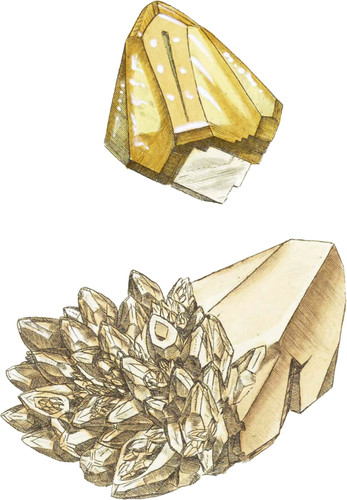 Enlarge
Enlarge
British Mineralogy
Carbonate of Lime
- Div. 1. Crystallized.
Mineralogical Nomenclators have given titles to crystals under various circumstances, such as Mackles or Twins; and I have exhibited crystals upon crystals which might have some corresponding or expressive term. The present is peculiar as to its structure, and is as it were seamed, and although now perhaps newly noticed, is certainly of as much consequence as many others, especially as it will furnish two very instructive and useful examples in Crystallography, which captivates the fancy so many ways. Here is a half of the Metastatic* Crystal covered on the three obtuse angles of the pyramids by a thick coat spreading on either side, till it meets nearly on the acute angles, forming upon them a plane with a line or seam in the middle of it, which makes the modification more conspicuous, at the same time it is helped by a difference in the inner crystal, which is somewhat more opaque and whiter than the outer covering; and in many lights we see the white reflection between the two surfaces. The three varied quadrangular faces are belonging to the common prism of this substance; those with the seams form somewhat rounding curved truncations to the three solid angles of the pyramid; the terminal faces are those of the equiaxe and primitive.
The lower is a group of nearly the same nature with the seams, if I may so call them, more closed, except in some places where there are small crystals formed, so as to appear as if bursting out of the cover, on which the pyramids rest, or from which they are a continuation.
The lower part of the tipper figure has the nucleus very distinctly in its place, and the diagonal fracture is very distinct, and serves to show the base of the pyramid. The Earl of Dartmouth brought me some opaque Limestone from Lord Dudley’s mine with these fractures very distinct.
- * Metastatic means the transposition that happens of the angles of the nucleus on to the secondary crystal.

